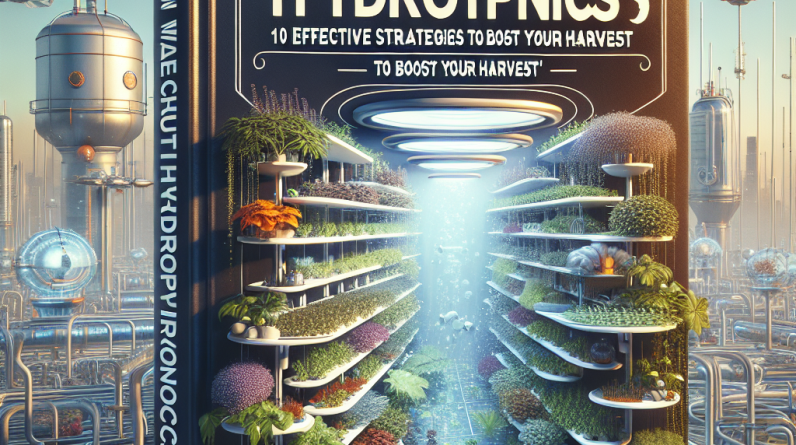
- 1. Understanding Deep Water Culture Hydroponics: Basics and Benefits
- 2. Setting Up a Successful Deep Water Culture System
- 3. Maintaining pH and Nutrient Levels for Optimal Growth
- 4. Choosing the Right Water and Nutrients in 2025
- 5. Managing Oxygen Levels for Healthy Roots
- 6. Lighting Strategies to Maximize Photosynthesis
- 7. Monitoring System Temperatures for Plant Health
- 8. Pest and Disease Prevention in Deep Water Culture Hydroponics
- 9. Automating Your Deep Water Culture System with Smart Tech
- 10. Troubleshooting Common Deep Water Culture Problems in 2025
1. Understanding Deep Water Culture Hydroponics: Basics and Benefits
What is Deep Water Culture Hydroponics?
Deep water culture (DWC) hydroponics is a method where plant roots are suspended directly in a nutrient-rich oxygenated water solution. In 2025, this method remains one of the most efficient for growing various crops, especially leafy greens and herbs. The simplicity of DWC systems makes them popular among hobbyists and commercial growers alike.
Unlike soil-based agriculture, deep water culture hydroponics allows precise control over nutrients and water, leading to faster growth rates. Imagine having plants that reach harvest size in just 30-40 daysâthis is achievable with well-managed DWC systems in 2025.
One key feature of deep water culture hydroponics is its reliance on oxygenation. Roots need oxygen to thrive, and in DWC, aeration is enhanced through air stones and diffusers, ensuring vigorous root development and healthy plant growth.
Benefits of Deep Water Culture Hydroponics in 2025
By 2025, deep water culture hydroponics has proven its advantages: higher yields, faster harvest cycles, and reduced water usage compared to soil cultivation. Studies have shown that plants grown in DWC systems can grow up to 25% faster and produce 30% more biomass.
Additionally, DWC systems minimize the risk of soil-borne pests and diseases, making it a cleaner and safer optionâespecially important in urban and indoor farming contexts. This method also allows for year-round cultivation, as environmental controls are easier to implement indoors.
For farmers aiming for sustainability, deep water culture hydroponics reduces water waste by recycling and re-oxygenating the solution continuously, aligning with eco-friendly farming practices in 2025.
2. Setting Up a Successful Deep Water Culture System
Choosing the Right Container and Materials
Starting your deep water culture hydroponics journey requires selecting the right container. Food-grade plastics, such as HDPE or PVC, are preferred for their durability and safety. A depth of at least 12 inches is recommended to allow ample space for root growth.
Ensure your container has proper drainage holes and is opaque, preventing algae growth. Transparency can lead to light exposure, which can harm roots and disrupt the oxygen levels in your nutrient solution.
Labeling and storing your containers in a clean, temperature-controlled environment help maintain system integrity over time, especially crucial as you upgrade to 2025 technology.
Completing Your Basic System Layout
The core of any DWC setup involves a reservoir holding nutrient solution, a net pot for plants, and air stones connected to an air pump. Position the system in a location with convenient access to power and proper lighting conditions.
Ensure your air pump delivers sufficient oxygenâtypically 0.5 to 1 liters per minute per potâto prevent root suffocation. Positioning the air stones at the bottom of the reservoir promotes even oxygen distribution.
Consider incorporating backup power supplies or automatic shut-off systems to prevent nutrient solution loss during outages, making your system resilient in 2025’s increasingly3d unpredictable weather.
Frequently Asked Questions
Q1: What is the best way to maintain nutrient levels in deep water culture hydroponics in 2025?
The best approach is regular testing using electronic pH and EC meters to keep nutrient levels within optimal ranges. In 2025, smart sensors integrated into automated systems make monitoring more accurate and less time-consuming.
Q2: Can deep water culture hydroponics be used for all types of plants?
Generally, DWC is excellent for leafy greens, herbs, and some small fruiting plants. Larger fruiting plants like tomatoes may require additional support and system modifications for optimal growth.
Q3: How do I prevent infections in my DWC system?
Maintain cleanliness, regularly change nutrient solutions, and monitor for signs of disease. Incorporating beneficial microbes and using disinfectants in early stages can also help prevent infections.
Q4: Why is oxygenation critical in deep water culture hydroponics?
Oxygen is vital for root respiration. In DWC systems, oxygenation prevents root rot and supports healthy nutrient uptake, leading to bigger, faster-growing plants.
Conclusion
In 2025, deep water culture hydroponics continues to be a revolutionary method for growers aiming for high-yield, sustainable crop production. Mastering this system with the best practices and latest technologies ensures a successful harvest every time. Whether you’re a seasoned hydroponic farmer or just starting, understanding and implementing effective strategies for deep water culture hydroponics is key to boosting your harvest this year and beyond.








